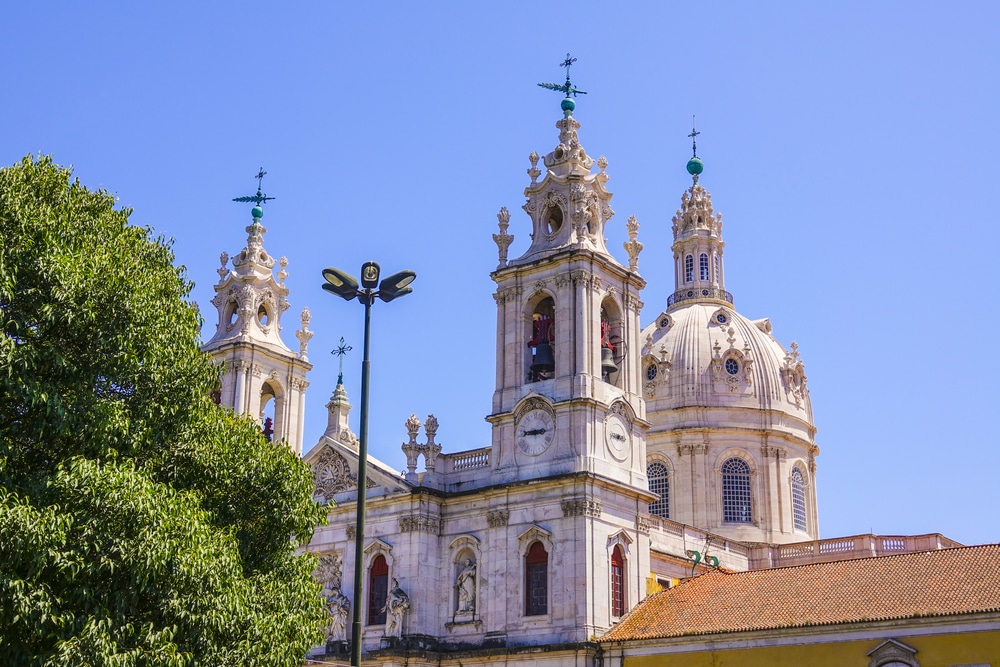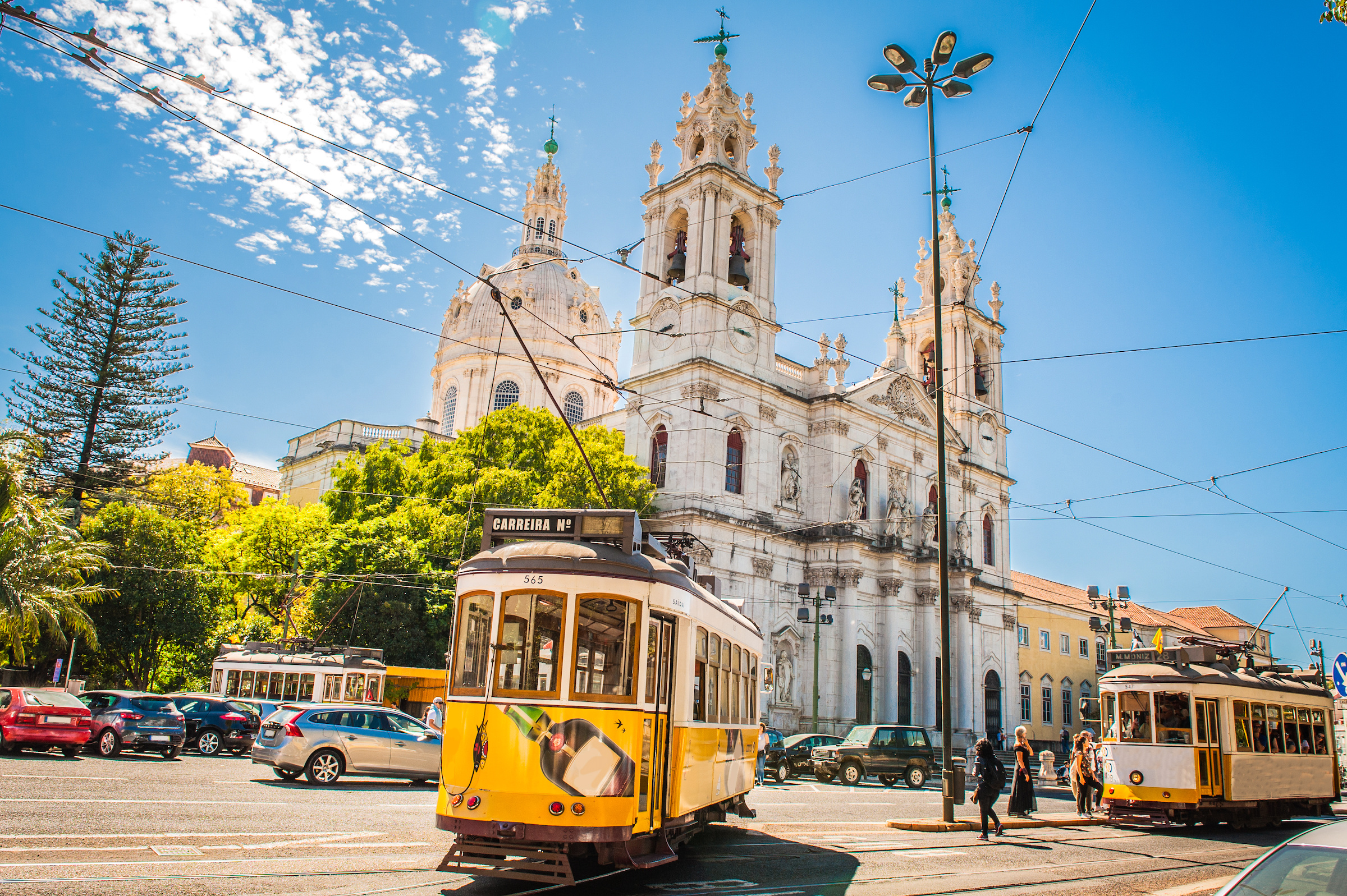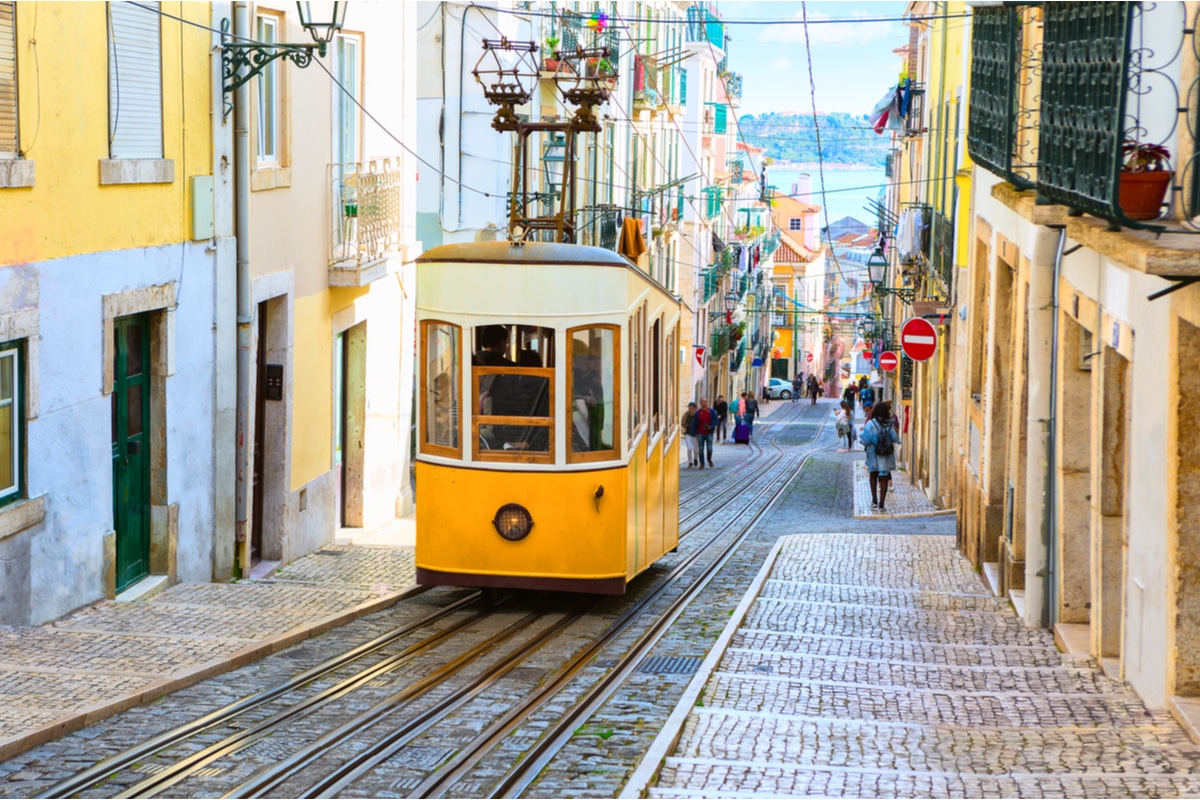Estrela Basilica
It sits enthroned like a queen on one of Lisbon's hills: the Basilica da Estrela. And in the course of its history, it was indeed elevated to the status of a regent, because the complete name of this mighty place of worship in the Portuguese capital is "Real Basílica e Convento do Santissimo Coracao de Jesus", which can be translated as "Royal Basilica and Convent of the Sacred Heart of Jesus".

Thanks for the birth of the heir to the throne
The outstanding features of this proud 18th century basilica are the snow-white dome and the towers with a cross. They all tower over the neighborhood and the shady park "Jardim da Estrela". The church, with its adjacent Carmelite monastery, owes its creation to the later regents Maria I and Peter III. When Maria I ascended the royal throne of Portugal, she commissioned the building, hoping for a male heir to the throne. This was given to them in 1761, and they christened him Joseph of Braganza.
White facades and colourful marble
It was to take 21 years for the Basilica da Estrela to be completed in 1790, and its shape resembled the Palácio Nacional de Mafra, the largest palace and monastery complex in Portugal, fifty kilometres north of Lisbon. White is still the dominant colour of the massive façades, which were built of sandstone from the surrounding area. In contrast, the interior of the basilica was designed with a colorful marble. The paintings and frescoes are by the Italian painter Pompeo Girolamo Batoni, who portrayed several popes in Rome.
The queen died in Brazil
Some of the sculptures were commissioned to Machado de Castro, one of the greatest sculptors in the country's history, who also created the famous equestrian statue of the Portuguese King Josè I on Lisbon's Praca do Comércio. Also worth seeing is the Basilica's large nativity scene, also the work of de Castro. Queen Maria I, who fled to Brazil from Napoleon's troops in 1807 with her entire court and a total of 15,000 people, was repatriated after her death in 1816 and found her final resting place in the Basilica da Estrela.



